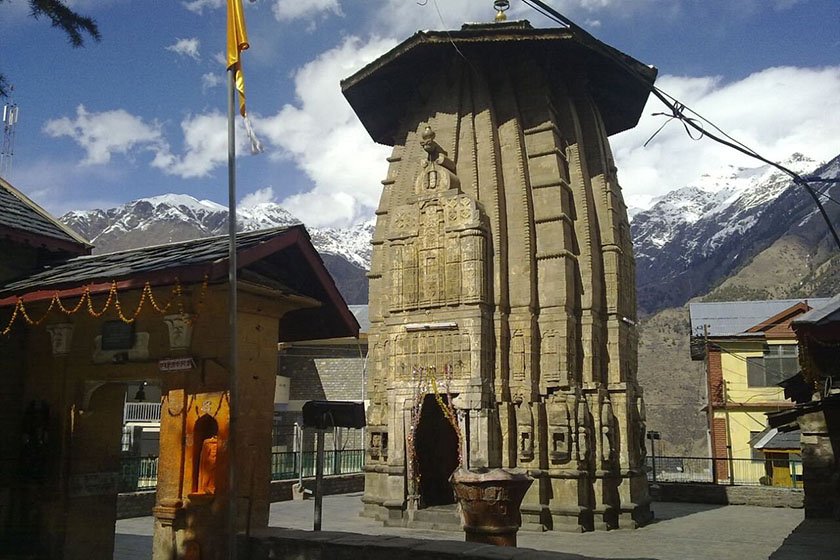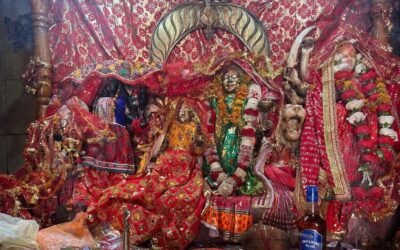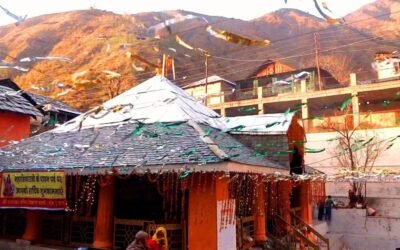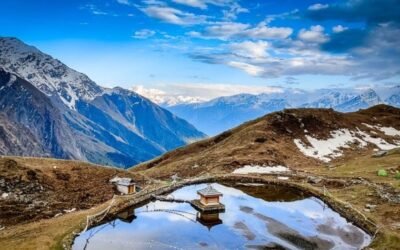Tucked into the sacred Chaurasi Temple Complex of Bharmour, the Narsingh Temple is a striking shrine dedicated to Lord Narasimha, the half-man, half-lion incarnation of Lord Vishnu. Built around 950 CE by Queen Tribhuvana Rekha and Raja Yugakar Varman, this temple is a rare fusion of mythic ferocity and Himalayan artistry, standing as a sentinel of divine justice and protection.
🌄 Location & Accessibility
- Location: Chaurasi Temple Complex, Bharmour, Chamba district, Himachal Pradesh – 176315
- Altitude: ~2,195 meters above sea level
- How to Reach:
- By Road: Chamba → Bharmour (65 km) via Hadsar
- By Rail: Nearest station – Pathankot (180 km)
- By Air: Gaggal Airport, Kangra (~130 km)
🛕 Mythological Significance
Lord Narasimha is the fourth avatar of Vishnu, who appeared to protect his devotee Prahlad and destroy the demon king Hiranyakashipu. The deity embodies divine rage and righteous protection, making this temple a place where devotees seek courage, justice, and spiritual strength.
Locals believe that speaking falsehoods or taking dishonest vows in this temple invites divine wrath—a testament to the god’s uncompromising nature.
🕉️ Deity & Worship
The Narsingh Temple is dedicated to Lord Narasimha, the fierce man-lion incarnation of Lord Vishnu, who appeared to protect his devotee Prahlad and destroy the demon Hiranyakashipu. The temple houses a striking bronze idol of Narasimha, cast with a high copper content that gives it a reddish hue—befitting the deity’s fiery nature. The idol depicts Narasimha with a muscular human body, a roaring lion’s head, and four arms—two raised with claws extended, and two folded beneath the chin—seated on a throne flanked by stylized lions and mountain motifs.
Worship at the temple includes daily aartis, incense offerings, and recitation of Vishnu Sahasranama, with devotees seeking protection, courage, and justice. Locals believe that speaking lies or taking false oaths in the presence of the deity invites divine wrath, reinforcing Narasimha’s role as a guardian of truth. The temple is especially revered during Narasimha Jayanti, when special rituals and community prayers are held to honor the deity’s incarnation.
🏛️ Architectural Highlights
- Built in Nagara style, the temple is smaller than the Manimahesh shrine but equally captivating
- Houses a bronze idol of Narasimha, cast with high copper content, giving it a reddish hue that reflects the deity’s fiery form
- The idol depicts Narasimha with a muscular human body, a lion’s head with a flowing mane, and four arms—two raised with claws extended, and two folded under the chin
- The deity sits on a throne flanked by stylized mountain motifs and lions, symbolizing his dominion over fear and evil
🎉 Rituals & Celebrations
- Daily Worship: Devotees offer incense, red cloth, and ghee lamps, seeking protection and inner strength
- Narasimha Jayanti (April–May): Celebrated with special pujas, bhajans, and community feasts
- Navratri & Janmashtami: The temple sees increased footfall during these festivals, as part of the Chaurasi pilgrimage circuit
🏞️ Nearby Attractions
- Manimahesh Temple: The central shrine of the Chaurasi complex
- Lakshana Devi Temple: The oldest wooden temple in Himachal
- Dharmeshwar Mahadev Temple: The only known temple to Lord Yama
- Bharmani Mata Temple: A hilltop shrine 4 km away
- Manimahesh Lake: A sacred glacial lake, 13 km trek from Hadsar
🙏 Spiritual Experience
The Narsingh Temple is not just a shrine—it’s a spiritual forge, where fear is melted into faith. As you stand before the lion-faced god, with his eyes wide and claws poised, you feel the presence of a protector who watches over Bharmour’s sacred heart with unblinking vigilance.




